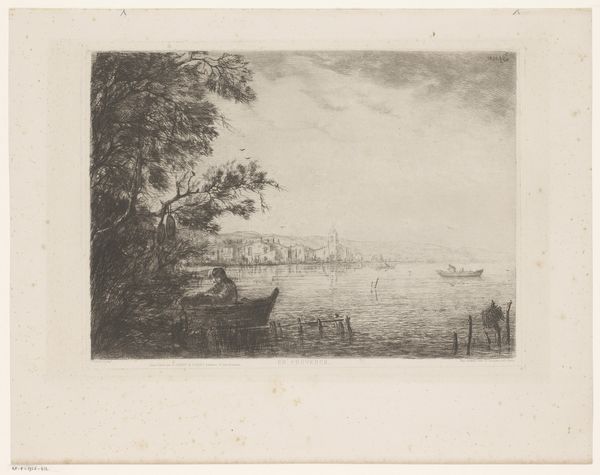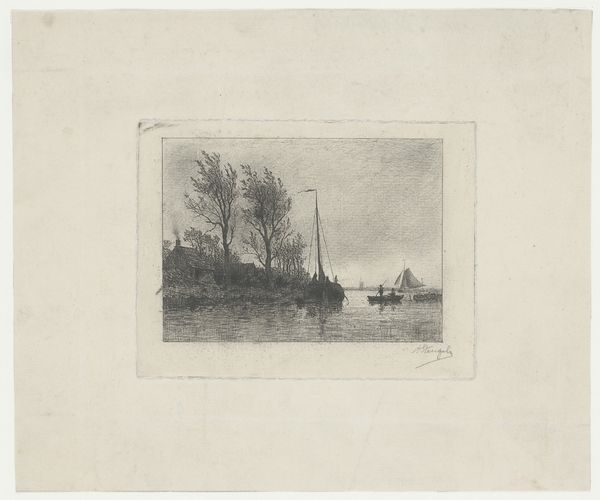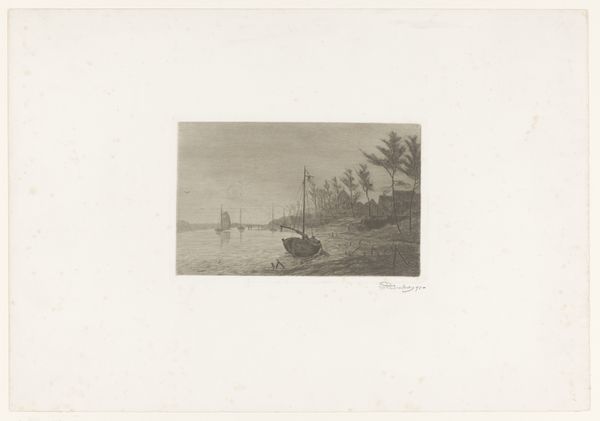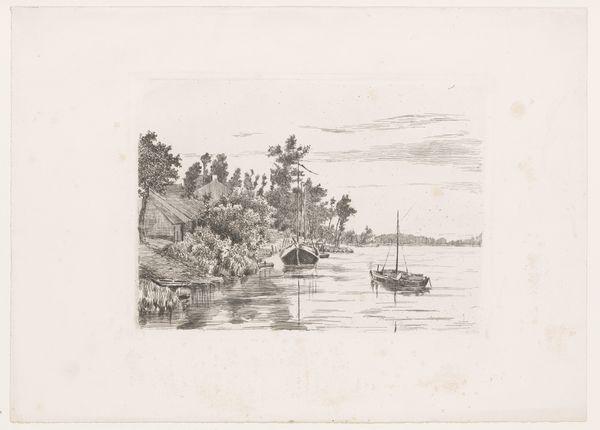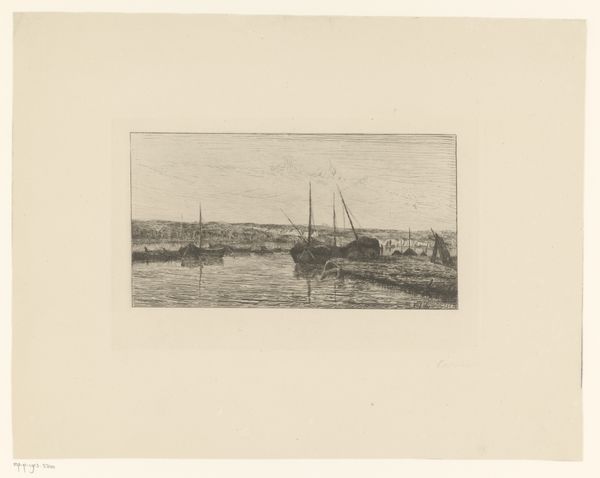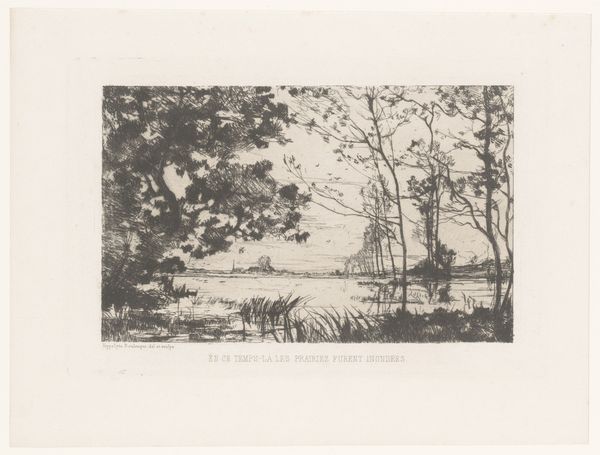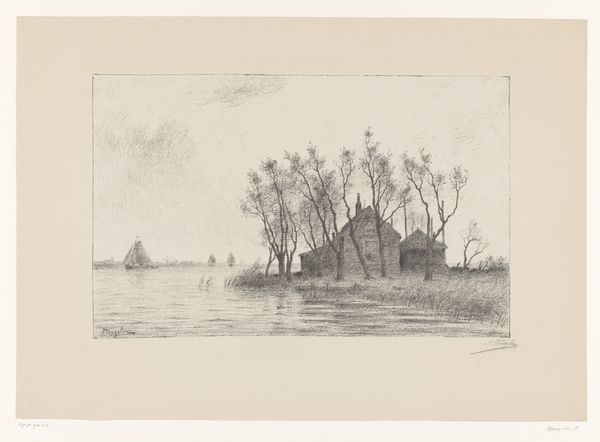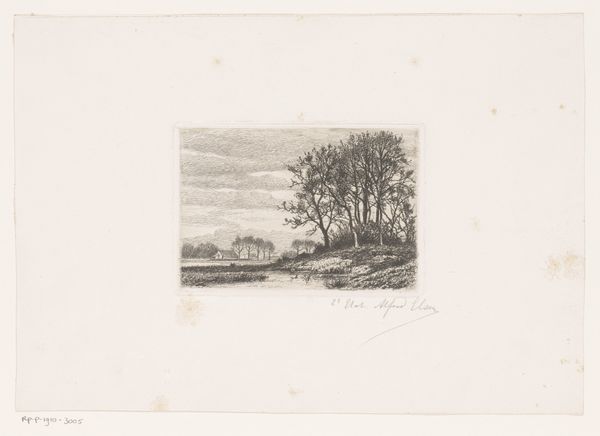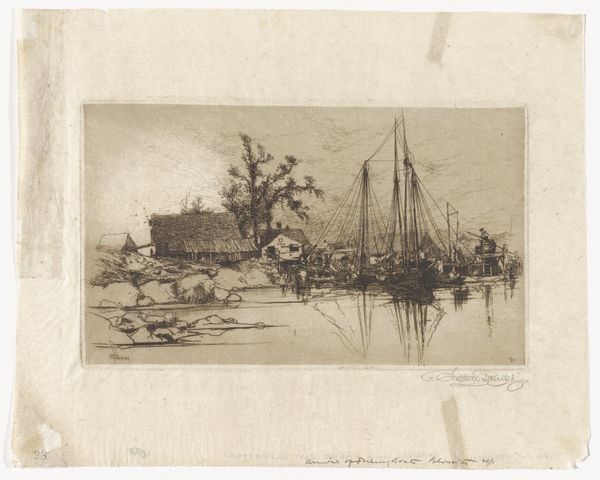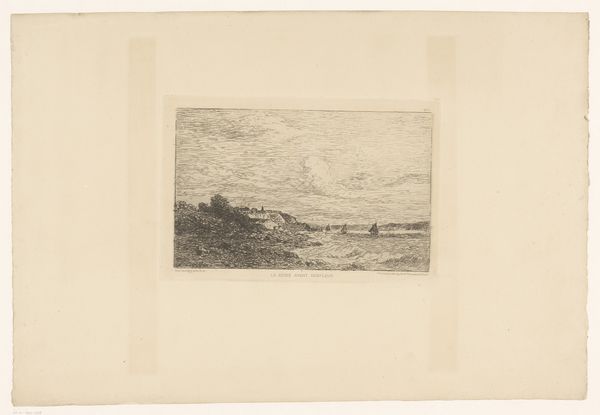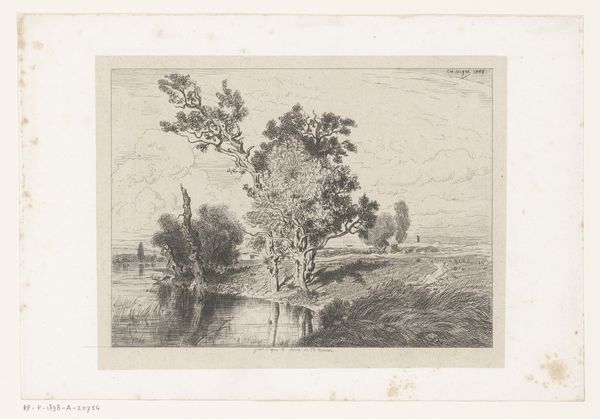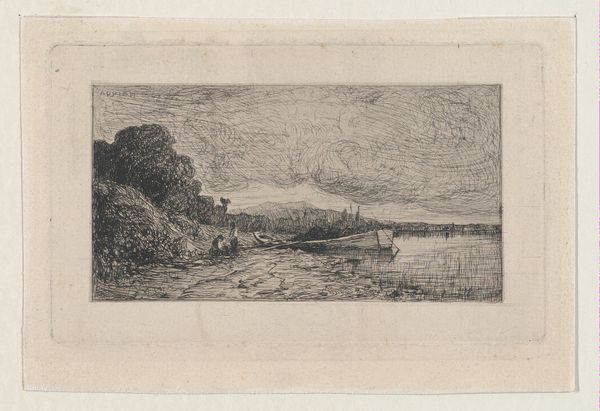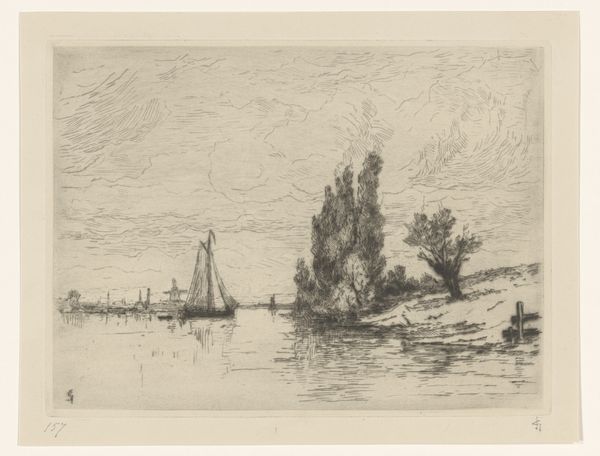
drawing, print, etching
#
drawing
#
dutch-golden-age
# print
#
impressionism
#
etching
#
landscape
#
river
#
figuration
#
realism
#
monochrome
Dimensions: height 176 mm, width 239 mm
Copyright: Rijks Museum: Open Domain
Curator: Jules Guiette's etching, "Twee zeilboten in een rivier met aan de oever huizen," places us along a quiet riverbank sometime between 1862 and 1901. Two sailboats rest on the water, near houses nestled amid lush trees. Editor: It feels very subdued. The monochromatic palette and dense, fine lines create an introspective mood, like looking at a memory. Curator: Notice how the composition is structured: the dark mass of trees and houses on the left balances the expanse of sky and water to the right. The sailboats provide a focal point, anchoring our gaze in the serene scene. Semiotically, the boats serve as metaphors for journeys. Editor: Right, but look at the making itself. You can see the labor. Consider the artist manually manipulating acids on the metal plate. Each line, each tone is achieved through an involved process, turning simple materials into complex visuals reflecting a time of industry and maritime trades. I also can’t help but think about who made the paper and the etching ink. These details invite an interesting context to what you suggest is just an atmospheric piece of work. Curator: An atmospheric study that captures a specific time of day through masterful arrangement of tone. And there's also the philosophical weight inherent in the tension between detail and minimalism here – Guiette shows how less can say so much. Editor: I appreciate your thoughts on artistic labor. Considering all that manual craft that the art involves leads me to a deeper acknowledgement for its impact than if I consider form only. Curator: Agreed, thinking through those layers can bring richness to experiencing and understanding a work.
Comments
No comments
Be the first to comment and join the conversation on the ultimate creative platform.
